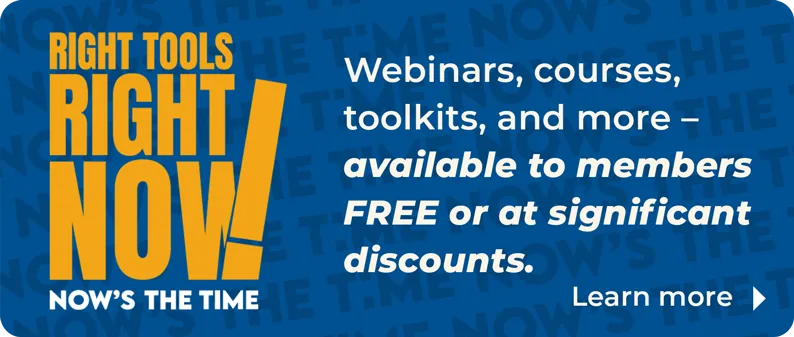
Whether via emails, text messages or other forums, so many senders are competing to get to our members today, from vendors pitching on how to increase leads and listings to software companies selling a new product. So, as associations, we must make communication with our members count. It’s so easy to talk about this idea, but how is it actually done?
Here’s the bottom line on how to create meaningful member communications—beyond “what’s in it for me?” Not all members need all messaging.
Although I’m the education director for Baldwin REALTORS® in Alabama, I started in communications during a pivotal moment in our association and MLS: After decades on the previous platform, we were converting our MLS along with a suite of other MLS tools, and the training we provided was—wait for it—mandatory. I learned a thing or two about communicating intentionally during that whirlwind of a few months. I now work with our awesome and knowledgeable communication director on audience segmentation. Instead of blasting all messages out to our full membership, we segment emails to our members to ensure we’re communicating with value.
What Is Audience Segmentation?
For those who don’t know where to start—or even understand what segmentation is—here are a few definitions. Audience segmentation means dividing up your audience into different groups according to specific criteria, such as membership type, designations or certifications held, transaction volume, or a specific area in which members sell. Using a few tools—available through your association management system, MLS or M1—makes segmenting easier than you might think.
You start by pulling a “query,” a data set from your AMS. You can pull queries based on different data points—such as name, address, certifications or designations, basically anything you collect in your AMS. The data is then typically exported into a spreadsheet (we use Excel).
Specific Segments
When segmenting, it’s easiest to start with general topics and then work your way down to get as specific as possible. It really depends on the time and resources you can allocate. Here are a few examples to get you started:
MLS
My association owns its MLS, so that’s an obvious segment. However, not all our MLS subscribers are association members in Alabama. Some subscribers are association members in Florida and Mississippi as we are geographically close to those state lines. So, we have two separate monthly newsletters. One goes to MLS subscribers, and we’re strict about focusing on MLS tools and news in that newsletter. In the second newsletter, targeted to our Alabama members, we focus on association news, education courses and benefits. Do some people get two newsletters? Yes, but they’re getting different information in each.
Member Education
My association started offering the Real Estate Business Institute’s The Right Start program in 2021. It’s a specific program, usually for newer agents, but veteran agents who need a lift in their business also benefit from it. In promoting it, we take a list of members who joined less than two years ago and combine it with a list from our MLS that identifies members who have had fewer than 12 transactions in the last two years, eliminating duplicates.
So, we focus on a very specific audience of newer agents and agents who might want to increase their productivity. Our Right Start emails and texts go only to agents who fall into either of these two categories.
Affiliates
Let’s not forget our industry partners. Affiliates don’t need to be overwhelmed with news that is for REALTOR® members. They have a specific purpose in the association, and it’s not to know when the MLS will be down. Remember the value of your different member types and the roles each might have in their offices and in your membership.
Other Possibilities
With your AMS, the possibilities are endless. If you are associated with a commercial MLS, you probably have a spot in your AMS indicating that on your members’ profiles. If you don’t know how to pull that list, your AMS provider should be able to do it for you with some notice or even hop on a call to show you how to pull that information.
You can also use M1 to pull Certified Commercial Investment Members or other commercial designations and add them to that list—there’s your audience for commercial news, updates and courses. This same practice could apply to property managers, if you collect that data from your members.
If you don’t have the ability to have your MLS and AMS “talk” with each other to narrow down your lists, you can always put any lists you need to combine into a spreadsheet, where you can easily identify and remove any duplicates. Otherwise, if you are able to invest in email software such as MailChimp, the technology will automatically de-duplicate your email lists.
Outside of emails and text messages, your AMS may have a single sign-on where your members can access their accounts, MLS login screen, association news and more. This landing page is a huge opportunity. Talk with your AMS rep about creating different content for your member segments— whether it’s posts just for designated REALTORS®, appraisers, members who need Code of Ethics training, property managers, members who speak a different language—really, for anything you collect and have in your AMS, there’s a way to separate it and use it to communicate to members.









